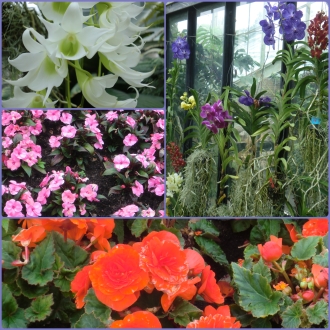I was excited to visit Kew Gardens today for our last class before we leave for Edinburgh. The Royal Botanic Gardens at Kew, originally two royal private gardens, was opened to the public in 1840 and have since become a renowned institution for the collection of plant specimens as well as botanic research. Kew boasts the largest collection of living plants in the world and is home to one of the field’s leading herbariums, or collections of dried preserved specimens. While the gardens and the Victorian conservatories are absolutely stunning, I found the history of the plant collections the most interesting portion of the visit.
Kew’s world-class herbarium is located in the oldest part of the institution’s archives, dating from 1877. Founded in 1853, the collection now contains seven million specimens and 350,000 type specimens, the original sample upon which new species have been based. Kew also houses a number of spirit collections comprised of plant material, such as orchids, that would loose their essential shape if pressed. Spirit collection samples are preserved with the help of embalming fluid to retain their form. Herbariums are unique archives, they are essential to the study of plant taxonomies, global vegetation distribution, and offer a historical record of change. Kew’s herbarium contains pressings dating back to the 18th century, personal collections belonging to Charles Darwin, Doctor David Livingstone, John Hanning Speke, and other famed scientists, and receives over thirty-seven thousand new specimens a year.
Plant specimens are dried using presses and are adhered to acid free archival paper. The pressings are placed in boxes that are arranged within the herbarium by family, region, genus, and species. Information concerning the specimen’s provenance, collector, identification numbers, and other potentially helpful information, like local uses, are recorded on the sample’s label. During our tour I asked about the changing practice of preservation for the pressings. The archivist answered that the major preservation issue for ensuring the survival of collections is the utilization of undamaging adhesive to attach samples to the archival quality paper.
Daniel R. Headrick, in When Information Came of Age, a discussion of 18th and 19th century information systems, highlights the importance of taxonomic classifications developed by botanist Carl Linnaeus. Linnaeus laid the foundations of binomial nomenclature, the classification of living organism based upon genus and species name in the 1750s. The ease and rationality of the Linnaean system became popular among professional botanists. Britain in particular was quick to embrace Linnaeus’s theories with many of his students participating in British expeditions to the Americans, India, and Africa. In 1760 the gardens at Kew laid out 3,400 species according to Linnaean taxonomic classifications. The legacy of Linnaeus’s studies can still be seen in Kew’s herbarium and gardens.


